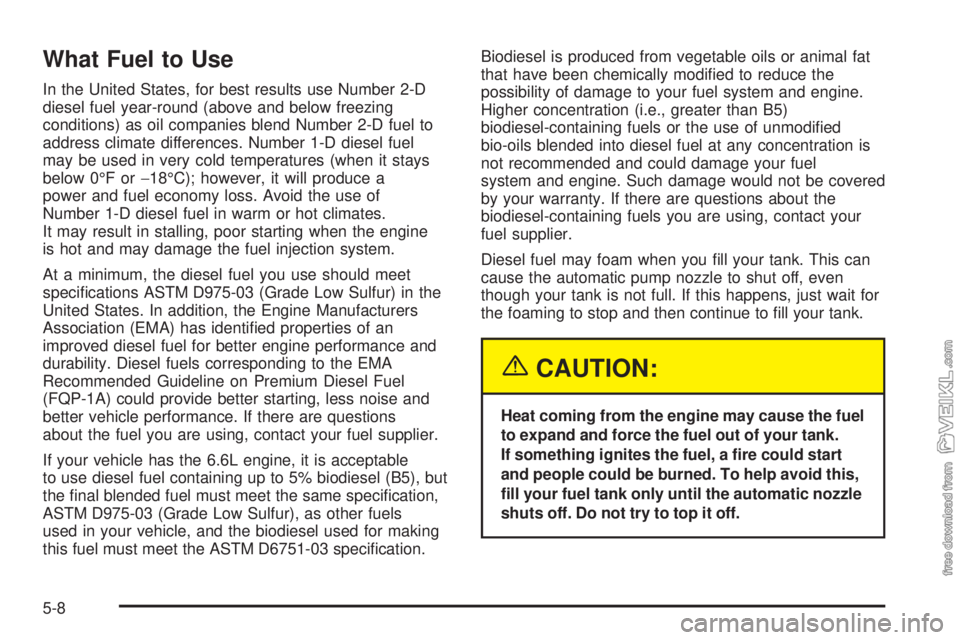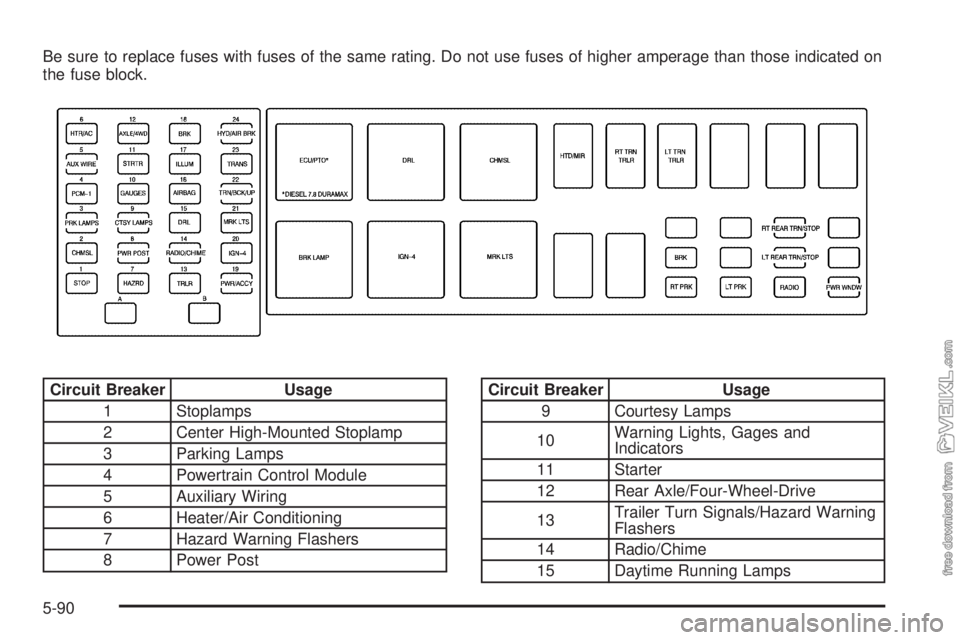What Fuel to Use
In the United States, for best results use Number 2-D
diesel fuel year-round (above and below freezing
conditions) as oil companies blend Number 2-D fuel to
address climate differences. Number 1-D diesel fuel
may be used in very cold temperatures (when it stays
below 0°F or−18°C); however, it will produce a
power and fuel economy loss. Avoid the use of
Number 1-D diesel fuel in warm or hot climates.
It may result in stalling, poor starting when the engine
is hot and may damage the fuel injection system.
At a minimum, the diesel fuel you use should meet
specifications ASTM D975-03 (Grade Low Sulfur) in the
United States. In addition, the Engine Manufacturers
Association (EMA) has identified properties of an
improved diesel fuel for better engine performance and
durability. Diesel fuels corresponding to the EMA
Recommended Guideline on Premium Diesel Fuel
(FQP-1A) could provide better starting, less noise and
better vehicle performance. If there are questions
about the fuel you are using, contact your fuel supplier.
If your vehicle has the 6.6L engine, it is acceptable
to use diesel fuel containing up to 5% biodiesel (B5), but
the final blended fuel must meet the same specification,
ASTM D975-03 (Grade Low Sulfur), as other fuels
used in your vehicle, and the biodiesel used for making
this fuel must meet the ASTM D6751-03 specification.Biodiesel is produced from vegetable oils or animal fat
that have been chemically modified to reduce the
possibility of damage to your fuel system and engine.
Higher concentration (i.e., greater than B5)
biodiesel-containing fuels or the use of unmodified
bio-oils blended into diesel fuel at any concentration is
not recommended and could damage your fuel
system and engine. Such damage would not be covered
by your warranty. If there are questions about the
biodiesel-containing fuels you are using, contact your
fuel supplier.
Diesel fuel may foam when you fill your tank. This can
cause the automatic pump nozzle to shut off, even
though your tank is not full. If this happens, just wait for
the foaming to stop and then continue to fill your tank.
{CAUTION:
Heat coming from the engine may cause the fuel
to expand and force the fuel out of your tank.
If something ignites the fuel, a �re could start
and people could be burned. To help avoid this,
�ll your fuel tank only until the automatic nozzle
shuts off. Do not try to top it off.
5-8
Be sure to replace fuses with fuses of the same rating. Do not use fuses of higher amperage than those indicated on
the fuse block.
Circuit Breaker Usage
1 Stoplamps
2 Center High-Mounted Stoplamp
3 Parking Lamps
4 Powertrain Control Module
5 Auxiliary Wiring
6 Heater/Air Conditioning
7 Hazard Warning Flashers
8 Power PostCircuit Breaker Usage
9 Courtesy Lamps
10Warning Lights, Gages and
Indicators
11 Starter
12 Rear Axle/Four-Wheel-Drive
13Trailer Turn Signals/Hazard Warning
Flashers
14 Radio/Chime
15 Daytime Running Lamps
5-90

